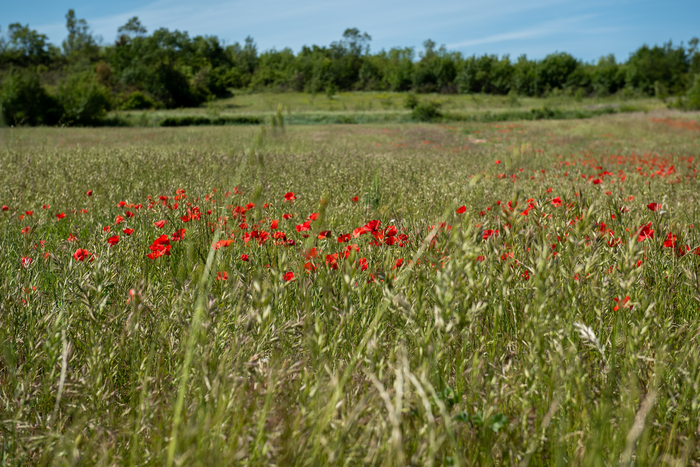Based on an analysis of the future Common Agricultural Policy (CAP) that will apply over the period 2023-2027, more than 300 experts from 23 European Union Member States have analysed its impacts on the protection and restoration of biodiversity. While the European Union is targeting ambitious climate and environmental goals under the Green Deal, the scientists highlighted the modesty of the positive effects on biodiversity of the future CAP as it now stands and issued concrete proposals to correct these weaknesses, notably regarding measures under the new Eco-scheme environmental instrument of the Eco-scheme. The scientists underlined the importance of protecting natural elements of the landscape and extensively managed grasslands, implementing protective measures at the scale of territories and rendering payments conditional upon the environmental results obtained. They also insisted on the dual need to improve procedures for the monitoring of impacts and enable a greater engagement of farmers. A summary of this work – to which INRAE contributed – was published on 30 June in Conservation Letters.

Credit: INRAE – Nicolas BERTRAND
Based on an analysis of the future Common Agricultural Policy (CAP) that will apply over the period 2023-2027, more than 300 experts from 23 European Union Member States have analysed its impacts on the protection and restoration of biodiversity. While the European Union is targeting ambitious climate and environmental goals under the Green Deal, the scientists highlighted the modesty of the positive effects on biodiversity of the future CAP as it now stands and issued concrete proposals to correct these weaknesses, notably regarding measures under the new Eco-scheme environmental instrument of the Eco-scheme. The scientists underlined the importance of protecting natural elements of the landscape and extensively managed grasslands, implementing protective measures at the scale of territories and rendering payments conditional upon the environmental results obtained. They also insisted on the dual need to improve procedures for the monitoring of impacts and enable a greater engagement of farmers. A summary of this work – to which INRAE contributed – was published on 30 June in Conservation Letters.
Since its creation in 1962, the CAP has managed relationships between the farming sector and European society. For many years, the aims of CAP instruments were limited to economic dimensions alone, but they have gradually become enriched by climate, environmental and social goals. To date, the measures proposed to mitigate climate change, protect natural resources and preserve biodiversity have had insufficient positive effects. In particular, they have not been able to halt biodiversity losses in agricultural eco-systems. The scientists underlined the considerable risk that the new CAP, which comes into force for five years as from 1st January 2023, will not be able to reverse this negative trajectory.
Adjusting this focus requires more ambitious measures to protect and restore farmland biodiversity. The proposals thus formulated by the scientists target fixed landscape elements (hedges, banks, copses, woods, wetlands, etc.) and semi-natural areas (notably extensively managed grasslands), diversity at the plot, farm and territorial scales and the connectivity of high quality habitats for wildlife and plants. Practices and systems that favour attaining these targets should be encouraged through direct aids whose levels should be proportionate to the importance of the environmental services provided (in the context of a shift from an obligation of means to an obligation of results and impacts). Their implementation will also require coordinated spatial planning that must go beyond the individual farm level, the determination of quantitative targets and the reinforcement of systems to monitor progress (notably through the development of suitable indicators that will require improving the current information systems used in each Member State). Finally, the scientists noted that the new climate and environmental instrument of the Eco-scheme offers an opportunity to implement the measures they are proposing, and emphasised the need for better articulation of the three environmental instruments of the future CAP (alongside the Eco-scheme, conditionality of payments and agri-environmental and climate measures).
All these measures must be implemented in a coordinated and transparent manner and involve all actors, the foremost being farmers. Beyond the CAP, they will require considerable investment by Member States in order to ensure monitoring and control and, if necessary, the development of institutions where they are deficient.
It is urgent to reduce the ecological footprint of European agriculture and European food systems in general, as invited by the Green Deal (and more particularly in this context the Farm to Fork strategy and the EU Biodiversity strategy for 2030. Hervé Guyomard, research director in economics at INRAE and co-author of the article, thus noted that “the climate and environmental status quo is no longer an option. The problem must be addressed at the scale of this major challenge while also taking account of the productive and economic consequences of greater ecological ambitions; these consequences will require measures that enable farmers to adapt and engage with change. Solutions exist to better manage the trade-offs between the different dimensions of sustainability. If we are not ready to pay this price today, the price tomorrow and beyond will be much greater, with a further degraded climate and a total absence of the services assured by biodiversity.”
Journal
Conservation Letters
DOI
10.1111/conl.12901
Article Title
How can the European Common Agricultural Policy help halt biodiversity loss? Recommendations by over 300 experts
Article Publication Date
30-Jun-2022




